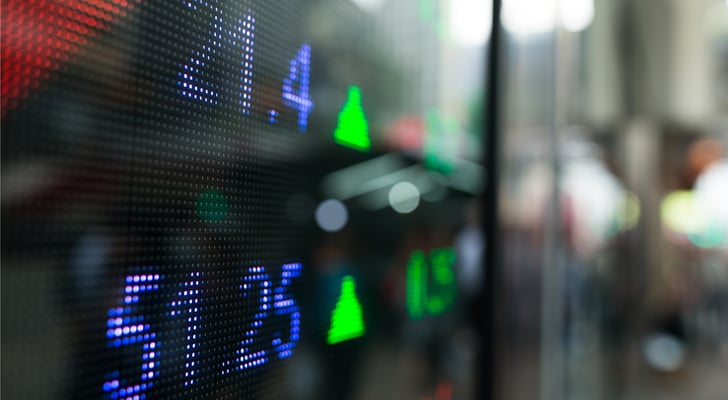All things considered, the first half of 2018 was less than thrilling for investors. The S&P 500 is up a modest 1% year-to-date, versus the more typical 3.5% gain we see halfway through the year. Trade war and tariff rhetoric kept investors toward the more conservative end of the spectrum, despite healthy earnings growth.
Will we see more of the same tepidness during the second half of 2018? Probably not.
While international trade remains a question mark and geopolitical tensions are still high (North Korea has offered little in the way of goodwill despite an amicable pow-wow between Donald Trump and Kim Jong Un), as usual, capitalism is finding a way to move forward. Remain on the sidelines at your own peril.
Looking at the Second Half of 2018
Given the headlines, few investors would be surprised to learn that the technology sector “won” the first half of 2018. Led by the likes of FANG stocks Netflix (NASDAQ:NFLX) and Amazon (NASDAQ:AMZN), tech stocks, on average, are up roughly 10% since the end of 2017.
The leaders and laggards could have a role-reversal in the foreseeable future, though.
That’s what Gina Sanchez, CEO of Chantico Global, sees on the horizon anyway. She explained earlier this week that “caution has crept back into the markets.”
She noted that in May, value stocks outperformed growth stocks for the first time in nearly two years. Sanchez also suggests that valuation of technology and consumer discretionary stocks is stretched, setting the stage for a migration toward more value-oriented names.
Slower economic growth is also in the cards, largely stemming from fears of trade wars, and the trade war that’s materialized to date.
Doug Gordon, senior portfolio manager at Russell Investments, explained just a few days ago:
“Put this in the context of something that is so hard to know which is the impact that it could have on confidence — whether that’s CEO confidence, consumer confidence. When that CEO decides not to make that additional capex expenditure or decides not to make that additional hire because of the uncertainty around trade, that’s a concern.”
However, Gordon went on to say:
“We have midterm elections in the United States and even potentially in the 2020 presidential elections … that could cause pressure on the Trump administration that might force them to be a little bit more malleable when it comes to what they may or may not give in trade negotiations.”
Translation: The trade war chatter coming out of the White House is more of a negotiation tactic than an outright economic attack on our trade partners.
Regardless of the reason, most observers don’t think the near future will be as robust as the recent past in terms of economic growth. T. Rowe Price investment officer of Rob Sharps opined:
“We’re not necessarily at the end of a bull cycle, but if you take a multiyear view, you should probably expect lower returns going forward than what we’ve experienced over the last couple of years.”
Not every expert sees such a brisk headwind, though. Invesco’s Chief Global Market Strategist Kristina Hooper notes:
“Although this is not a synchronized global growth environment, most economies should improve in the back half of this year. In other words, the lower growth we are currently experiencing is likely only temporary, in my view.”
Her stance may be more on target than others, and more on target than most investors realize. The Federal Reserve Bank of Atlanta believes Q2’s GDP growth rate will be on the order of 4.0%, if not better.
Meanwhile, Standard & Poor’s is calling for the S&P 500 to report per-share earnings of $38.65 for Q2, up 26% year-over-year. Its analysts are also calling for comparable double-digit earnings growth for the last two quarters of year, largely fueled by tax cuts and despite the plausible impact of a full-blown trade war.
Bottom Line
It’s a lot to process as we head into the second half of 2018. But, it’s no less to process than we normally do.
There are always challenges for the market and always tailwinds, and many of these are purely psychological. It doesn’t really matter in the short run, as emotions always dictate what’s going to happen with stocks today and tomorrow.
But six months down the road, it’s all about earnings. And, with investors increasingly believing the trade war is just talk being batted around against solid economic growth, it’s unlikely those investors will be so hesitant to hold stocks.
That’s not to suggest things won’t change. The technology sector really is running out of steam. So is growth. Value names like telecom giant Verizon (NYSE:VZ) and healthcare name Johnson & Johnson (NYSE:JNJ), both of which have lagged of late, could be start to outperform again — and soon.
More than anything, though, the tide continues to rise. It hasn’t lifted all boats equally (and some not at all). But, the fear of missing out on actual earnings growth has set the stage for a much better second half of 2018.
Just bear in mind we might need to suffer a serious capitulation before we’ve cleared the decks for a strong finish.
As of this writing, James Brumley did not hold a position in any of the aforementioned securities. You can follow him on Twitter, at @jbrumley.

